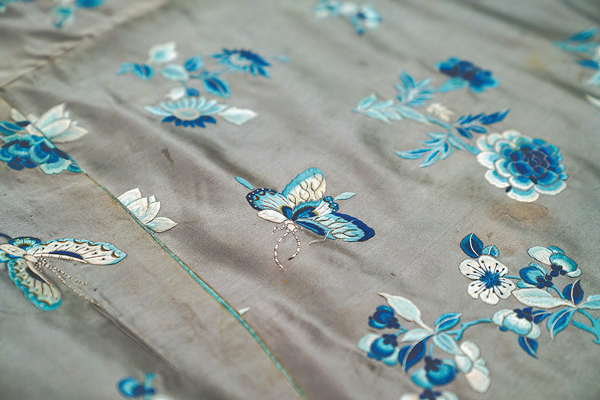

All 10 pieces of qipao were made of luxurious materials such as velvet, silk and jacquard. They were hand-stitched and decorated with elaborate embroidery, bindings and knotted buttons. Three were haute couture pieces featuring renowned brands of the time in Shanghai — Sun Sun Department Store, Sincere Department Store and Dragon.
These costumes feature the "distinctive aesthetic characters and fine craftsmanship representing the artistic styles and technical achievements in the Yangtze River Delta region from the late 1800s to the early 1900s, and thus have high value for research and exhibition", reads the appraisal by a senior academic on Chinese costume history, who was invited by the museum.
The two Qing Dynasty garments could "effectively fill in the gap in the museum collection and become highly valued assets for the studies and exhibitions about Yangtze River Delta culture and the costume evolution in Shanghai," Yu says.
Qipao, also known as Cheongsam, is a signature clothing style of women in China. It evolved from the Manchu female's long gown of the Qing Dynasty. The early 20th century saw the modernization of the qipao style, which became slender and tight-fitting.
In Shanghai, the first modern metropolis and fashion center of China, qipao was favored by women regardless of age or social status. Young, beautiful women wrapped in body-tight qipao were popular subjects on commercial poster calendars during this period. These prints were immensely popular and hung in almost every household in Shanghai and other cities.